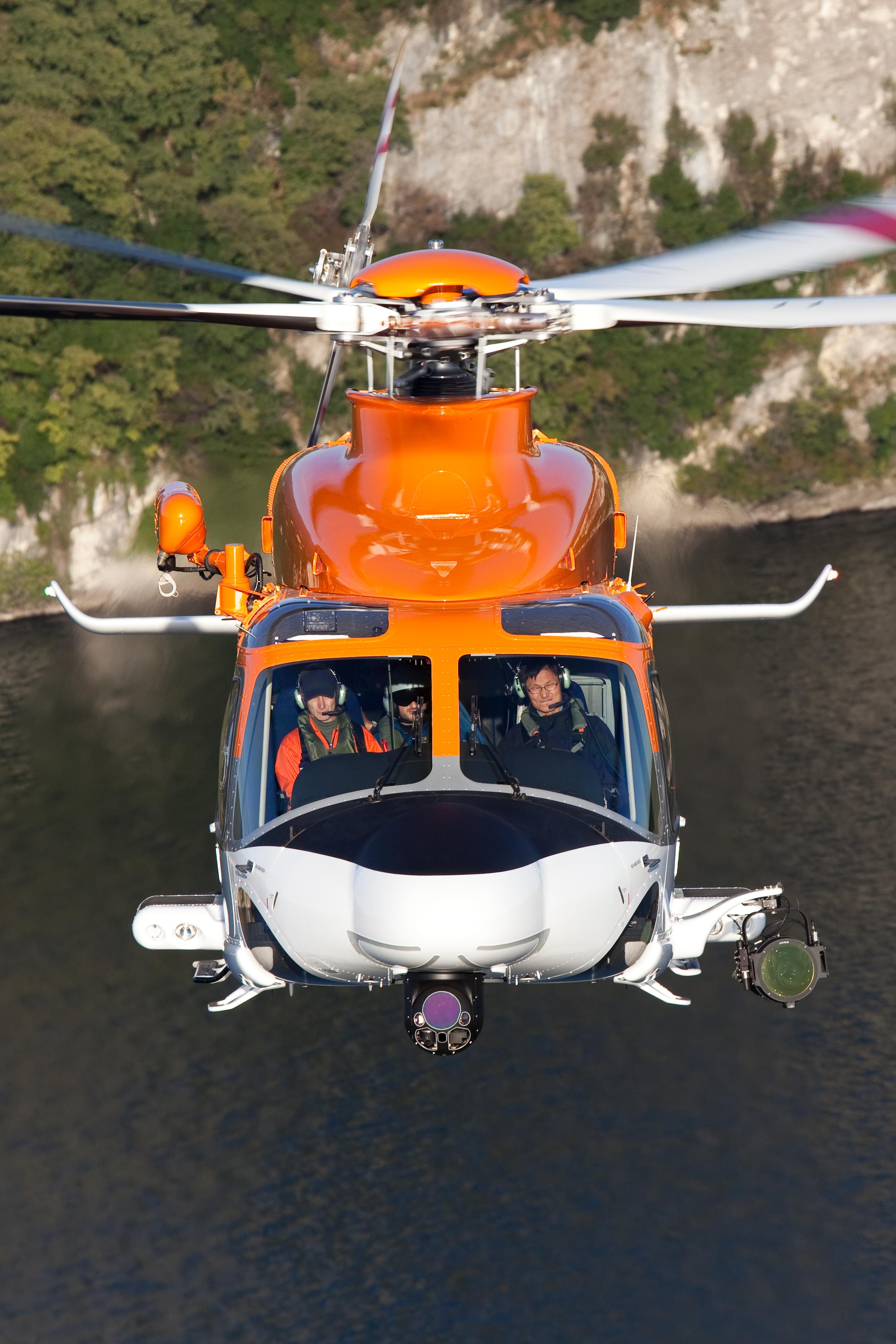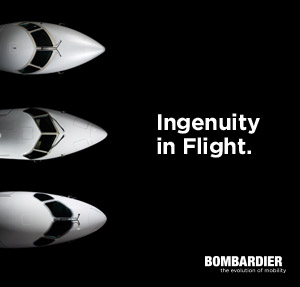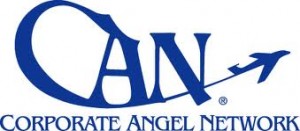Lockheed Martin Inducts Second C-5 Galaxy for RERP Modernization Program
January 15, 2010
MARIETTA, Ga., Jan. 15 /PRNewswire-FirstCall/ — Lockheed Martin (NYSE: LMT) recently inducted its second C-5 Galaxy strategic transport into the Reliability Enhancement and Re-engining Program (RERP) production line at its Marietta, Ga., facility. The RERP modifications consist of more than 70 improvements and upgrades to the C-5 airframe and aircraft systems, and include the installation of new higher-thrust, more reliable turbofan engines.
“Each RERP aircraft induction is a major milestone for our program. We are making great strides with our first RERP induction and expect to keep up the same productive pace with this aircraft,” said Lorraine Martin, Lockheed Martin C-5 vice president. “Every C-5M we produce gives added strength to the U.S. Air Force fleet and the warfighters who protect our country.”
The C-5M is the product of a two-phase modernization effort. The first, the ongoing Avionics Modernization Program (AMP), provides the aircraft a state-of-the-art glass cockpit with modern avionics and flight instruments. Nearly half of the C-5 fleet has already undergone the AMP modifications. RERP is the second phase of the C-5 modernization effort.
The second aircraft to enter the RERP production line is a C-5B based at Dover AFB, Del. This aircraft, U.S. Air Force serial number 85-0002, was first delivered to Travis AFB, Calif., on Sept. 30, 1986, and was stationed there for much of its career, until it moved to Dover. This C-5 Galaxy currently has more than 19,000 flight hours.
Current Air Force plans call for Lockheed Martin to deliver 52 C-5Ms (modification of 49 C-5Bs, two C-5Cs, and one C-5A) by 2016. Three C-5Ms, the former Super Galaxy test fleet, have been redelivered to the U.S. Air Force at Dover AFB.
Headquartered in Bethesda, Md., Lockheed Martin is a global security company that employs about 140,000 people worldwide and is principally engaged in the research, design, development, manufacture, integration and sustainment of advanced technology systems, products and services. The corporation reported 2008 sales of $42.7 billion.
Lockheed Martin Receives $344 Million in Ongoing Funding for C-5 Modernization Program
January 12, 2010
MARIETTA, Ga., Jan. 11 /PRNewswire-FirstCall/ — Lockheed Martin (NYSE: LMT) has received ongoing funding through a recently issued Acquisition Decision Memorandum (ADM) that authorizes Low Rate Initial Production (LRIP) associated with the C-5 Super Galaxy Reliability Enhancement and Re-Engining Program (RERP).
“This funding enables us to continue to partner with the U.S. Air Force to produce enhanced C-5M Super Galaxy aircraft to support the warfighter for decades to come,” said Lorraine Martin, Lockheed Martin C-5 program vice president. “The C-5M Super Galaxy is redefining strategic airlift and delivers unparalleled support to all U.S. armed forces.”
The $344.3 million funding supports LRIP RERP production for 15 aircraft, including installation on three aircraft, material and fabrication for five aircraft, and long-lead funding for seven aircraft. Production of the C-5M Super Galaxy began in August 2009, when the first aircraft was inducted into the production program. This aircraft is slated for delivery to the USAF in September 2010. Three C-5Ms have already been delivered to the USAF and current USAF plans call for 52 fully-modernized C-5Ms by 2016.
The C-5M is the product of a two-phase modernization effort. The first, the ongoing Avionics Modernization Program (AMP), provides a state-of-the-art glass cockpit with modern avionics and flight instruments. The RERP is the second phase of the C-5 modernization effort. It includes 70 enhancements or replacements of major components and subsystems, including the installation of GE CF6-80C2 commercial engines. Modernization of the C-5 pays for itself through savings in operation and sustainment costs.
The C-5 has been the backbone of strategic airlift in every engagement since it entered service. It is the only aircraft capable of carrying 100 percent of certified air-transportable cargo, with a dedicated passenger compartment enabling commanders to have troops and their equipment arrive in an area of operation simultaneously. The C-5 can carry twice the cargo of other strategic airlift systems. With more than 70 percent of its structural service life remaining, the C-5M Super Galaxy will be a force multiplier through 2040.
EADS To Maintain Spain’s Eurofighters
January 12, 2010
Spain’s Ejercito del Aire has recently signed a 10-year
contract with EADS Defence & Security Military Air
Systems unit, in order to maintain its Europfighter fleet
at Moron Air Base near Seville.
The contract value is $225 million.
EADS has been supporting the Spanisg Eurofighter fleet
since 2003 in Getafe, and since 2004 at Moron.
The ON Aircraft Scheduled Inspections Industrial Service
(OASIIS) includes scheduled maintnance activities, as well
as the procurment and management of spares for the
fleet.
This is the first time EADS has signed this kind of shared
risk agreement with the Spanish Air Force.
Israel Rafalovich
Helibras Will Upgrade Brazilian Panther Helicopters
January 12, 2010
Helibras, Eurocopter’s Brazil subsidiary, will upgrade
34 Brazilian Army AS365K Panther helicopters with
new engines and avionics.
The modification, will take place at a rate of four
helicopters per year between 2011 and 2021, and
should extend the fleet’s service life by at least
25 years.
Eurocopter did not disclose the value of the contract
but said that it is Helibras’ largest service contract to
date.
The Helibras Engineering Center will equip the Panther
fleet with new Turbomeca Arriel 2C2 CG engines with
full authority digital engine control, Rockwell Collins’
Pro Line 21 digital radio communications systems, and
a glass cockpit with enlarged primary flight navigation,
tactical and other displays.
Israel Rafalovich
A400M flies for third time
January 12, 2010
The Airbus Military A400M airlifter has flown for the third time as the flight-test programme for the type picks up pace after the year-end break.
In a two hour 25 minute sortie from Seville, Spain on 7th January the test crew concentrated on exploring flight in different aircraft configurations.
The aircraft, known as MSN1, has now completed x hr y min total flying.
Test pilot Michel Gagneux became the third pilot to fly the aircraft, supporting aircraft captain Nacho Lombo. Airbus head of flight operations Fernando Alonso also flew on the aircraft for the first time, acting as flight test engineer.
Mr Alonso said: “It was a very satisfying moment to take part in this successful third flight. We made considerable progress in further exploring the aircraft’s behaviour in different configurations and were pleased with what we saw. The flight programme is progressing well and in the days ahead, now that the operational flight envelope has been cleared, we will be flying regularly further evaluating the aircraft’s handling characteristics and doing initial systems evaluations .”
The rhythm of flight testing is expected to increase substantially in the coming days. Overall, this first aircraft is expected to fly for some 1,200 hours during the 3,700hr test programme involving five aircraft which will lead to first delivery of the type in late 2012.
First Super Tucano Airplanes Airplanes to Chile’s Airforce
January 6, 2010
Embraer delivered the first four Super Tucano
airplanes, of a total of 12, to the Chilean Air Force.
Embraer’s proposal, includes a broad Integrated
Logistic Support(ILS) package and an advanced
Training and Operation Support System(TOSS),
covering not only the aircraft, but also the ground
support stations.
The Air Force TOSS consists of three systems:
a Mission Planing Station(MPS), a Mission Debriefing
Station(MDS) and a Flight Simulator(FS).
by Israel Rafalovich
Sikorsky Aerospace Services and Goodrich Collaborate to Offer Health and Usage Monitoring Systems (HUMS) to BLACK HAWK Helicopter Users Worldwide
January 5, 2010
STRATFORD, Conn., Jan. 5, 2010 – Helicopter Support Inc. (HSI) today announced the signing of a memorandum of understanding (MOU) with Goodrich Corporation to collaboratively promote an advanced aircraft maintenance solution to the worldwide rotary aircraft market. HSI is a support and distribution company of Sikorsky Aerospace Services (SAS), the aftermarket business of Sikorsky Aircraft Corp. Sikorsky Aircraft is a subsidiary of United Technologies Corp. (NYSE:UTX).
The Health and Usage Monitoring Systems (HUMS) developed by Goodrich’s Sensors and Integrated Systems business is a series of networked diagnostic sensors that continuously and comprehensively monitors the mechanical performance of the entire aircraft. This powerful system provides real-time data that enhances predictive maintenance. Integrating the HUMS data with Sikorsky Aerospace Services’ OEM installation expertise and support capabilities enables a breakthrough, proactive maintenance system that lowers operating costs and increases fleet availability.
“Our global OEM expertise, diverse specialties and experience position SAS as the premiere one-stop service provider in today’s demanding market,” said David Adler, President of Sikorsky Aerospace Services. “We are able to sell, support and maintain the Goodrich HUMS, and this full capacity exemplifies the unparalleled value we offer our customers worldwide.”
“We are the leading supplier of Vehicle Health Management Systems to the U.S. military,” said Jan Mathiesen, Vice-President of Goodrich Sensors and Integrated Systems. “Our systems have been validated on multiple aircraft including the Sikorsky BLACK HAWK helicopter, with documented reduction in maintenance time and costs. It’s a natural progression to offer our HUMS systems for international BLACK HAWK helicopter fleets, and we are pleased to collaborate with Sikorsky Aerospace Services and HSI to enable international customers to benefit from the total aircraft care package they can provide.”
Korea Coast Guard Orders Another AW139 Helicopter
December 22, 2009
AgustaWestland is pleased to announce that the Korean Government has signed a contract for one more AW139 medium-twin helicopter in Maritime Patrol configuration for the Korea Coast Guard. The order represents the third helicopter to be sold to the Korea Coast Guard and the sixth AW139 helicopter to be sold to the Republic of Korea. Earlier in the year the first AW139 was delivered to the Gangwon Fire Fighting Department and recently Samsung Corporation took delivery of its first of two AW139 corporate helicopters.
On the 10th December 2009 the first two Korea Coast Guard AW139 Maritime Patrol Helicopters were handed over to the Coast Guard during a ceremony held at Gimpo Airport in Seoul. Speaking after the ceremony Andrew Symonds, Vice President NE Asia, AgustaWestland, said “The delivery of the first two AW139 helicopters represents a significant stepping stone in developing the market in Korea and we are proud to be ale to achieve this by working closely with such a professional organization as the Korea Coast Guard. The contract for a third AW139 helicopter order not only demonstrates the expansion of the AW139 into the demanding and rigorous role of offshore search and rescue but indicates how the AW139 is highly considered by organizations such as the Korea Coast Guard.”
The Korea Coast Guard AW139 will be used for Maritime Patrol, SAR and EMS missions and will be equipped with Forward Looking Infra-Red (FLIR), search/weather radar, rescue hoist, emergency flotation system and a four-axis autopilot with SAR modes.
Engine Competition Preserved for Joint Strike Fighter Program
December 22, 2009
Engine Competition Preserved for Joint Strike Fighter Program
$465 Million in Funding for GE/Roll-Royce Engine in Fiscal Year 2010
EVENDALE, OHIO – December 22, 2009 – The annual jet engine competition
for the Joint Strike Fighter (JSF) has been preserved by the Defense
Appropriations Bill submitted by the U.S. Congress, and signed by
President Barack Obama. The Bill includes $465 million in fiscal year
2010 for the GE Rolls-Royce Fighter Team’s F136 engine.
By continuing the F136 – the competing JSF engine that is already more
than 70 percent through its development – the U.S. Congress preserves
the annual, head-to-head jet engine competition planned for the
Joint Strike Fighter (JSF), and demonstrates continued leadership for
acquisition reform reaffirming competition to control cost, while
spurring innovation and accelerating weapon system readiness and
performance.
“Competition is at the heart of defense acquisition reform,” said
David Joyce, president and CEO of GE Aviation. “We are deeply
gratified by 15 years of consistent, bipartisan Congressional support
for the F136 engine and by preserving the annual competition. It keeps
the engine manufacturers at their best, developing the best engines
and value for our military. The argument is simply too compelling for
competing engines on the largest military fighter jet program in
history.”
With funding secured, the GE/RR team enters a very aggressive test
period in 2010, with several production-configuration engines involved
in the test program. GE/RR is slated to deliver F136 flight test
engines in 2011.
Already, the benefits of competing JSF engines are being realized. In
September, the GE/RR team submitted an unsolicited fixed-price
contract proposal for JSF – a unique approach for early F136
production engines that shifts significant cost risk from taxpayers to
the contractors. This fixed-price approach reflects the objectives of
the Weapon Systems Acquisition Reform Act of 2009.
More than $2.5 billion has been invested in developing the GE
Rolls-Royce F136 engine, including more than $50 million from GE and
Rolls-Royce.
History shows that competing fighter engines significantly reduce
program costs, while improving safety, reliability, and contractor
responsiveness. The “Great Engine War,” the 20-year battle to power
the F-16 fighter, demonstrated cost savings of 21 percent, according
to a recent Government Accountability Office (GAO) report. For the
JSF, that equates to more than $20 billion in savings over the life of
the program.
The F136 engine is the most advanced fighter aircraft engine ever
developed and will be available to power all variants of the F-35
Lightning II aircraft for the U.S. military and eight partner nations.
The F136 engine is a product of the best technology from two
world-leading propulsion companies. The GE Rolls-Royce Fighter Engine
Team has designed the only engine specifically developed for the F-35
aircraft, offering extra temperature margin and affordable growth.
F136 engine development is being led at GE Aviation in Evendale, Ohio
(Cincinnati suburb), Ohio; and at Rolls-Royce in Indianapolis,
Indiana.
The F-35 is a 5th-generation, multi-role aircraft designed to replace
the AV-8B Harrier, A-10, F-16, F/A-18 Hornet and the United Kingdom’s
Harrier GR.7 and Sea Harrier, all of which are currently powered by GE
or Rolls-Royce. Potential F-35 production for the U.S. Air Force,
Navy, Marines and international customers may reach as many as 5000 to
6000 aircraft over the next 30 years.
A400M, WORLD’S MOST ADVANCED AIRLIFTER, COMPLETES FIRST FLIGHT
December 15, 2009
The first Airbus Military A400M military airlifter has landed back in Seville, Spain today at 14:02 local time (13:02 UTC) after completing a successful maiden flight lasting 3h 47min following its take-off at 10:15 local time.
Chief Test Pilot Military, Edward “Ed” Strongman, captained the flight supported by Experimental Test Pilot Ignacio “Nacho” Lombo. The engineering team on board included: Senior Flight Test Engineer Jean-Philippe Cottet who had responsibility for the powerplants; Senior Flight Test Engineer Eric Isorce with responsibility for the aircraft systems and performance; Senior Flight Test Engineer Didier Ronceray with responsibility for the handling qualities of the aircraft; and Test Flight Engineer Gerard Leskerpit.
The crew confirmed that the aircraft, known as MSN 1 and its four Europrop International TP400D turboprop engines performed as expected.
Ed Strongman said: “We have had a very successful first flight – the take-off performance was impressive, we explored a lot of the operational flight envelope, and it was a delight to operate in such a well-designed cockpit with its easy interface to all the normal and military systems. I’m sure our customer pilots are really going to like it – we certainly did.”
Nacho Lombo added: “From the very beginning of the flight we were impressed by the ease of handling of the aircraft which was in line with what we experienced in the simulator. The aircraft, systems and engine performance were highly satisfactory. We sense the great potential of this magnificent machine. It has been an honour for all the crew to fly the A400M on its maiden flight, representing all the people involved in the programme.”
Chief Executive Officer Airbus Military, Domingo Urena-Raso, said: “I would like to congratulate Ed Strongman, Nacho Lombo and all of the flight-test team for completing the first flight of the A400M with great success. I am also deeply grateful to everyone in the design, manufacturing and early operations of this programme for their enormously hard work and dedication that have made this aircraft a reality. And I want to thank all those people in our industrial partners and suppliers, as well as our customers, who have contributed so much to the definition and creation of an outstanding product.”
Airbus CEO Tom Enders said: “I hope we can soon provide certainty that we are able to continue the A400M programme. This is expected by those at Airbus, our partners and suppliers worldwide who contributed so strongly to today’s success as well as by the air forces who wait for their plane.”
For its first flight the aircraft took off at a weight of 127 tonnes, carrying 15 tonnes of test equipment including two tonnes of water ballast, compared with its maximum take-off weight of 141 tonnes. As planned, the six-man crew extensively explored the aircraft’s flight envelope in direct law, including a wide speed-range, and tested lowering and raising of the landing gear and high-lift devices at altitude. After checking the aircraft’s performance in the landing configuration the crew landed back at Seville.
In the first half of 2010 MSN 1 will be joined by two sister aircraft, MSN 2 and MSN 3, followed by MSN 4 by the end of the year. A fifth aircraft will join the programme during 2011. This fleet will be used for some 3,700 hours of test-flying between now and first delivery to the French Air Force at the end of 2012. This will be followed by additional military development flying. The type will be certificated by both the civil and military authorities.
A total of 184 aircraft have so far been ordered by Belgium, France, Germany, Luxembourg, Malaysia, Spain, Turkey and the United Kingdom,








